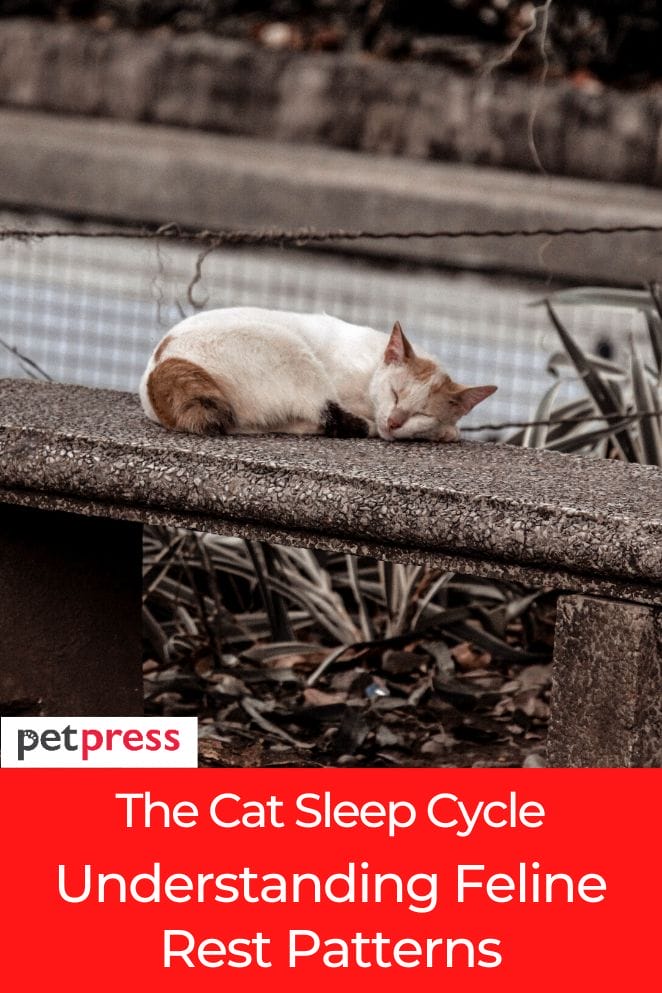
Cats, those mysterious and graceful creatures, have captivated humans for centuries with their enigmatic behaviors.
One aspect of their lives that often leaves us in awe is their sleep cycle.
Unlike humans and many other animals, cats have unique sleep patterns that are both fascinating and essential to their well-being.
Unique Sleep Patterns of Cats vs Other Animals
Cats are known for their ability to sleep for long hours throughout the day, with an average of 12-16 hours of sleep per day.
This behavior stems from their evolutionary history as predators who needed to conserve energy for hunting.
Unlike humans who have a consolidated sleep schedule at night, cats are crepuscular animals, meaning they are most active during dawn and dusk.
This explains why your feline friend may be wide awake at 3 a.m., ready to play or explore.
How Much Do Cats Sleep
Domestic cats are renowned for their love of sleep, spending a significant portion of their lives in slumber.
On average, they dedicate approximately two-thirds of their time to resting, which translates to roughly 13-16 hours per day.
However, this duration may vary based on factors such as age, health status, and environmental conditions.
Kittens and senior cats often log even more sleep hours compared to their adult counterparts.
This increased need for rest stems from the demands of growth and the necessity for adequate recovery.
As kittens develop and seniors navigate the challenges of aging, ample sleep becomes essential for their well-being and vitality.
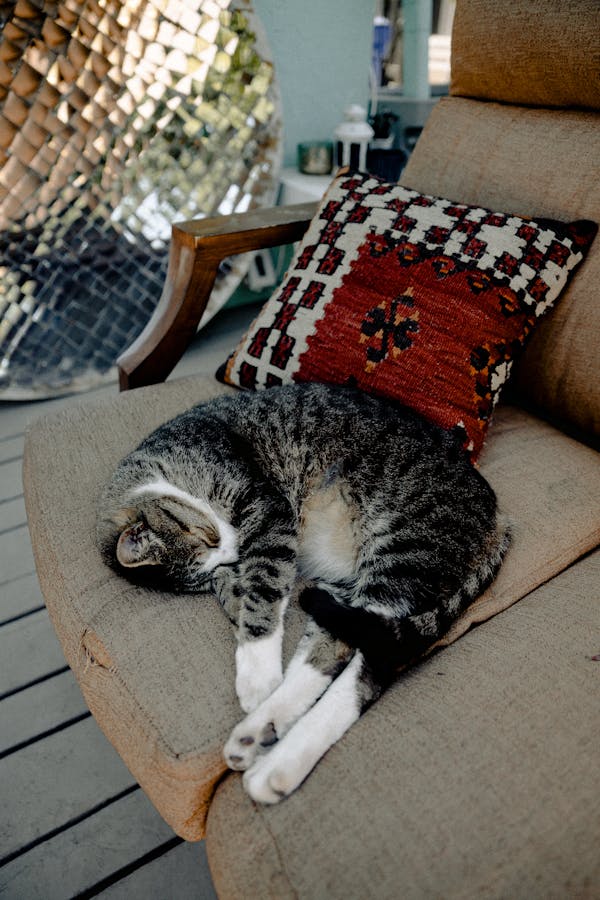
Factors That Influence a Cat’s Sleep Patterns
Cats are notorious for their love of sleep, often snoozing for upwards of 16 hours a day.
However, their sleep patterns are not random and can be influenced by various factors.
Understanding these factors can help you create a healthy sleep environment for your feline friend and address any potential concerns.
Age
- Kittens: Require significantly more sleep, often napping for 18-20 hours a day. This is crucial for their growth and development.
- Adult cats: Typically sleep for 12-16 hours, with some individual variations.
- Senior cats: May experience changes in their sleep patterns, including sleeping more or exhibiting fragmented sleep due to age-related health issues.
Health
Underlying medical conditions such as pain, hyperthyroidism, or kidney disease can disrupt a cat’s sleep patterns.
Parasites or infections may also cause restlessness and impact sleep quality.
Activity level
Cats’ sleep duration can be influenced by their activity level.
More active cats tend to sleep less than their more relaxed counterparts.
Regular exercise helps burn energy and can lead to deeper sleep at night.
Environment
- Noise: Loud noises or disruptions can disrupt sleep patterns.
- Light: Cats are sensitive to light, and excessive brightness can hinder their ability to sleep soundly.
- Temperature: Extreme temperatures, either hot or cold, can make it uncomfortable for cats to sleep.
Routine and schedule
Cats thrive on routine and consistency.
Establishing a regular feeding schedule, and playtime routine, and providing designated sleeping areas can promote better sleep quality in cats.
Individual differences
Just like humans, cats have unique personalities and preferences when it comes to sleep.
Some cats naturally require more sleep than others, regardless of external factors.
Recognizing and respecting these individual differences is key to ensuring a cat’s well-being and comfort.
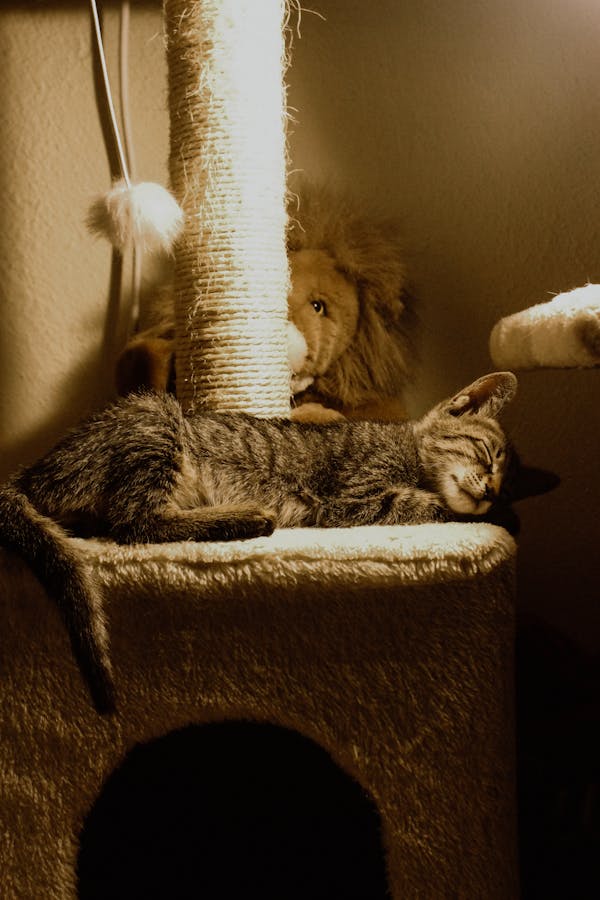
Common Concerns About Cat Sleep
Cats are renowned for their love of sleep, but their slumber habits can sometimes raise concerns for their well-being.
Here are some common concerns cat owners face, along with insights to help you navigate your feline friend’s sleep cycle:
My cat sleeps too much
- Consider the age: Kittens and senior cats naturally sleep more than adult cats.
- Observe their behavior: Are they lethargic even when awake? Do they eat and play normally?
- Consult a vet: If you notice significant changes in sleep patterns or suspect underlying health issues, seek professional advice.
My cat is up all night, meowing and acing
- Understand their natural cycle: Cats are crepuscular, meaning they are most active at dawn and dusk.
- Adjust playtime: Engage your cat in interactive play sessions before bedtime to tire them out.
- Enrich their environment: Provide climbing structures, scratching posts, and stimulating toys to keep them occupied during the night.
- Ignore unwanted behavior: Don’t give your cat attention for nighttime meowing, as it can reinforce the behavior.
My senior cat’s sleep is disrupted
- Age-related changes: Senior cats may experience fragmented sleep or sleep more during the day due to cognitive decline or discomfort.
- Provide a comfortable space: Offer a soft, easily accessible bed in a quiet location.
- Maintain a routine: Keep feeding times and playtime consistent to provide a sense of security.
- Address underlying issues: Consult your vet about potential health concerns that might be affecting your cat’s sleep.
My cat sleeps in unusual places
- Cats seek security and warmth: They might prefer high perches, under furniture, or in sunny spots.
- Offer designated sleeping areas: Provide comfortable beds or perches in various locations to cater to their preferences.
- Respect their choices: Avoid forcing your cat to sleep in specific locations unless it poses a safety risk.

How to Create a Healthy Sleep Environment for Your Cat
By creating a healthy sleep environment, you can ensure your feline companion gets the restful slumber they need to thrive.
Here are some key strategies:
Provide a comfortable bed
- Choose the right size: The bed should be large enough for your cat to stretch out comfortably in various positions.
- Consider the material: Opt for soft, plush materials like fleece or sherpa that provide warmth and comfort.
- Multiple options: Offer a variety of beds in different locations to cater to your cat’s preferences. Consider elevated perches, enclosed caves, or cozy blankets.
Establish a quiet and secure space
- Location matters: Choose a quiet area away from high-traffic zones or loud noises like appliances.
- Minimize disruptions: Avoid placing the bed near doors, windows, or areas with frequent activity.
- Offer hiding spots: Provide enclosed spaces like cardboard boxes or covered beds where your cat can feel safe and secure.
Maintain consistent lighting
- Cats are sensitive to light: Avoid placing the bed in direct sunlight or near bright lamps.
- Nighttime slumber: Ensure the sleeping area is dim or dark at night to mimic their natural sleep cycle.
- Consider nightlights: If necessary, use a low-wattage nightlight to provide a soft glow for nighttime navigation.
Optimize temperature and climate
- Ideal temperature: Aim for a comfortable room temperature between 68-72°F (20-22°C).
- Avoid extremes: Avoid placing the bed near drafts, radiators, or air vents that can cause discomfort.
- Seasonal adjustments: Provide cooling mats during hot weather or additional bedding for warmth in colder months.
Establish a routine
- Regular feeding times: Maintaining a consistent feeding schedule helps regulate their internal clock and sleep patterns.
- Playtime before bed: Engage your cat in interactive play sessions before bedtime to tire them out and promote deeper sleep.
- Minimize disruptions: Avoid disturbing your cat while they’re sleeping, as this can disrupt their sleep cycle.
How Can You Tell if Your Cat is Getting Enough Sleep
Here are some tips to help you determine if your feline friend is getting the rest they need:
Monitor their behavior during waking hours
Monitor your cat’s behavior when awake.
If they appear alert, playful, and content during waking hours, it’s a positive indication that they are getting sufficient rest.
Check their sleeping patterns
Recognize that cats are polyphasic sleepers, meaning they sleep in short bursts throughout the day.
If your cat engages in these short, intermittent naps, it’s a sign that they are likely meeting their rest needs.
Observe their sleep quality
Consider the quality of your cat’s sleep. Some naps may be deeper and more restful than others.
Observe how easily your cat is disrupted during sleep – do they react to small sounds, or does it take a loud noise to wake them up?
Note sudden changes in sleeping patterns
Be attentive to any sudden changes in your cat’s sleeping patterns or behavior.
If you notice anything unusual, consulting with a veterinarian is essential to rule out any potential underlying health issues.
Check their environment
Ensure your cat has a comfortable and quiet bed or resting area.
Minimize noise and distractions to create an optimal sleep environment.
Provide opportunities for mental and physical stimulation during waking hours to promote restful sleep.
Establishing a consistent bedtime routine can also contribute to regulating your cat’s sleep cycle.
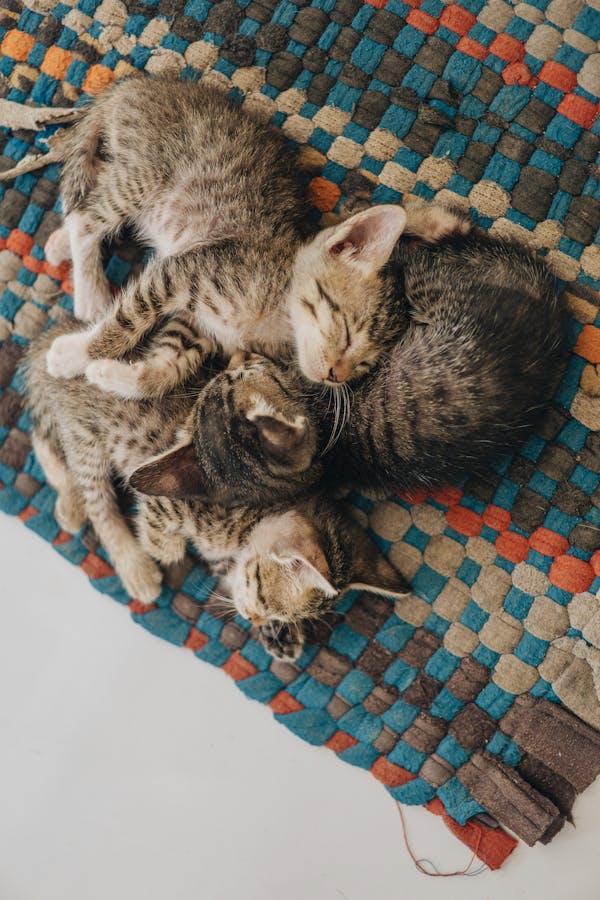
Common Sleep Disorders in Cats
Some cats may experience sleep disorders that can affect their overall health and well-being.
Here are some common sleep disorders in cats and how they are treated:
Narcolepsy and cataplexy
These are rare but well-studied disorders of the nervous system that affect the way an animal is able to physically operate.
Narcolepsy is characterized by excessive daytime sleepiness, lack of energy, and brief losses of consciousness.
Cataplexy is characterized by sudden muscle weakness and paralysis without loss of consciousness.
These disorders are usually congenital and inherited conditions that can be brought on by excitement such as eating, drinking, or greeting owners and can last seconds to minutes, many times a day, or infrequently.
These disorders are not curable, but medications can be prescribed to help control the frequency or duration of the attacks.
Insomnia
Just like humans, cats can experience difficulty falling and staying asleep.
Insomnia in cats may get triggered by medical problems, such as heart issues, cognitive dysfunction, or a brain tumor.
Additionally, sometimes pets that are itchy and uncomfortable due to allergies can have difficulty sleeping.
The same is true for animals that are having difficulty holding their bladder through the night.
In some cases, what may be perceived as insomnia may actually simply be difficulty adapting to changes in your pet’s environment or natural potty break and walk schedules may lead to sleepless nights.
If you notice that your cat is sleeping either more or less than usual, consult your vet.
Changes in sleep patterns
Older cats may experience behavior changes in sleep cycles or waking in the night, restlessness, and pacing.
This is either related to senility or a disease called Hyperthyroidism.
Hyperthyroidism occurs when the thyroid gland produces an excess amount of thyroid hormone which can lead to cardiac disease.
A specific thyroid blood test can be checked to verify this abnormality, and treatment can be initiated.
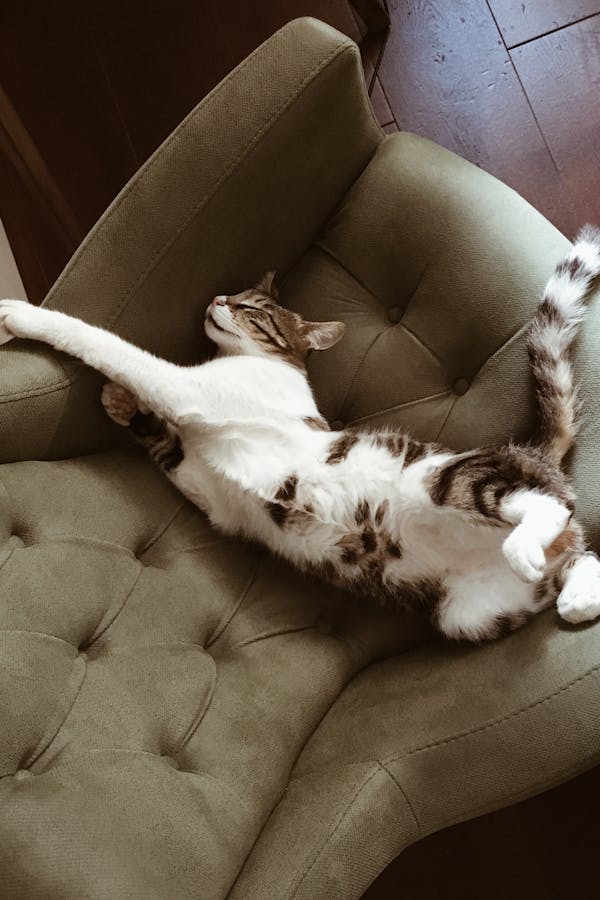
Conclusion
To nurture your cat’s well-being, it’s crucial to comprehend their distinctive sleep cycle.
By acknowledging their inherent behaviors and crafting an environment conducive to rest, you guarantee your feline companion experiences high-quality sleep, fostering their happiness and overall health.
Understanding and adapting to their unique sleep patterns is key to providing the care necessary for their thriving lifestyle.
FAQs
Cats typically sleep for 12-16 hours per day, with kittens requiring even more (18-20 hours) and senior cats potentially sleeping more or experiencing fragmented sleep. However, individual variations exist.
Cats are crepuscular, meaning they are most active at dawn and dusk. They conserve energy during the day through extended sleep periods to be ready for hunting and activity during their peak times.
Yes, cats are known for taking short naps throughout the day as part of their natural sleep cycle. These power naps help them conserve energy for more active periods.
It’s best to let your cat wake up naturally from their naps unless you suspect they may be oversleeping due to an underlying health issue. If in doubt, consult with your veterinarian.


GIPHY App Key not set. Please check settings